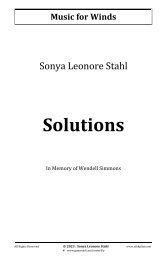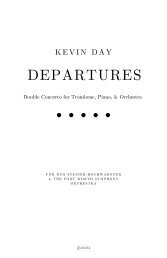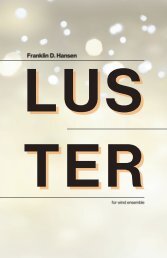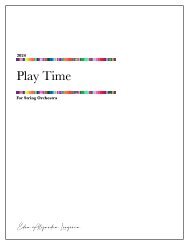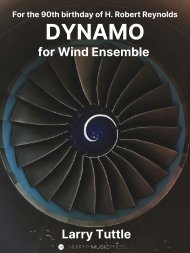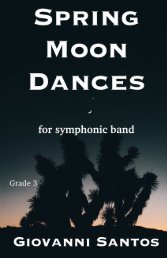Salon Morisot-Jodie Blackshaw
You also want an ePaper? Increase the reach of your titles
YUMPU automatically turns print PDFs into web optimized ePapers that Google loves.
ut to invite the student to decrescendo and gently release their sound so that their release isn’t<br />
noticeable. You can teach this to your students using their voice first with the humming that exists at the<br />
beginning and end of the second movement. Students are encouraged to start with a hum, gradually move<br />
to an ‘ooo’ sound then back to a hum and gently release. If your group is small enough, do this with<br />
everyone standing in a circle. Can they tell when the students around them have released their sound?<br />
Who will be detected and who will not? It’s as much a listening activity as it is of breath control.<br />
Key Signatures<br />
Each movement does not employ the use of key signatures, instead, accidentals are employed. This provides<br />
you, the director, an opportunity to discuss key signature with your students and based on their accidentals,<br />
discover what key they think each movement is based on.<br />
T NOTES TO THE CONDUCTORT<br />
I – Majesty<br />
1. Percussion 3: this should be one of your strongest percussionists because the part is so exposed. Concert<br />
marimba is the preferred instrument here, or a Bass Xylophone.<br />
2. Trombone: there is a focus in this movement for the trombone players to embrace a “Study” on moving<br />
between the 3 rd and 4 th slide positions. Seat them near the Bassoons (if you have them) in this movement,<br />
it will help them find and hold their pitch.<br />
3. Keyboard: this part has been included to provided a strong tonal centre for the whole ensemble to refer<br />
to. Hence, a solid, non-wavering string ensemble sound on a keyboard is asked for. This can be played by<br />
a student new to ensembles who is confident with keyboard – it will give them the opportunity to get used<br />
to working with others whilst learning to follow a conductor.<br />
4. At measure 49 a cue has been placed in the Trumpet part. If you feel your clarinetists cannot work out<br />
how to play their written ‘A’ in tune by adding additional fingers in the right hand, then it may work better<br />
for your ensemble to use trumpet. I don’t mind either way J<br />
5. Intensity is key in this movement, as is momentum. It is vital that the ensemble dynamic moves<br />
progressively and isn’t too loud, too soon. Hold back until the measures 37-48. To quote Tim Reynish ‘If it<br />
is always loud it never gets exciting’. Let this movement become exciting!<br />
Educational Goal #1: Learning to hear harmonic changes<br />
In Movement 1, the melodic material first represented by Flute, Oboe, Bassoon and Trombone overlays two moving chords - G<br />
and F. Over the G centre, the melodic material sits in the third of the chord, whilst over F the concert B natural becomes a tension,<br />
a diminished fourth (tritone) that resolves to the major third. Articulate this to your students and ask them to embrace the tension,<br />
not shy away from it. This will enable stronger intonation and help them hear the simple changing harmonic structure.<br />
At measure 41, the piece lands in E¯ major and the same melodic figure now sits in the 5 th of the chord providing resolution and<br />
another harmonic change. Teaching students about where their part sits in the voicing of the chord is empowering and enhances<br />
their listening.<br />
iii









